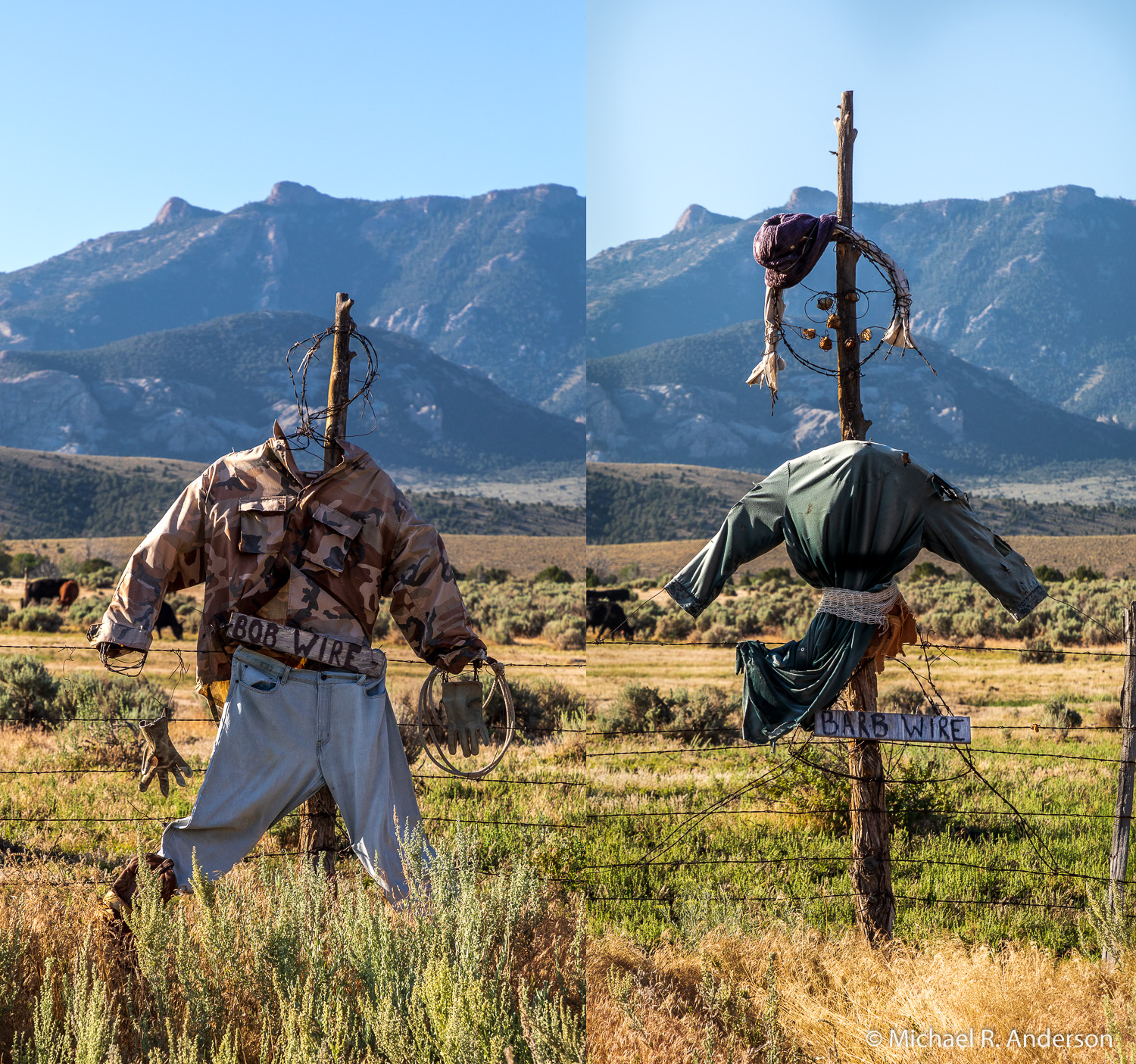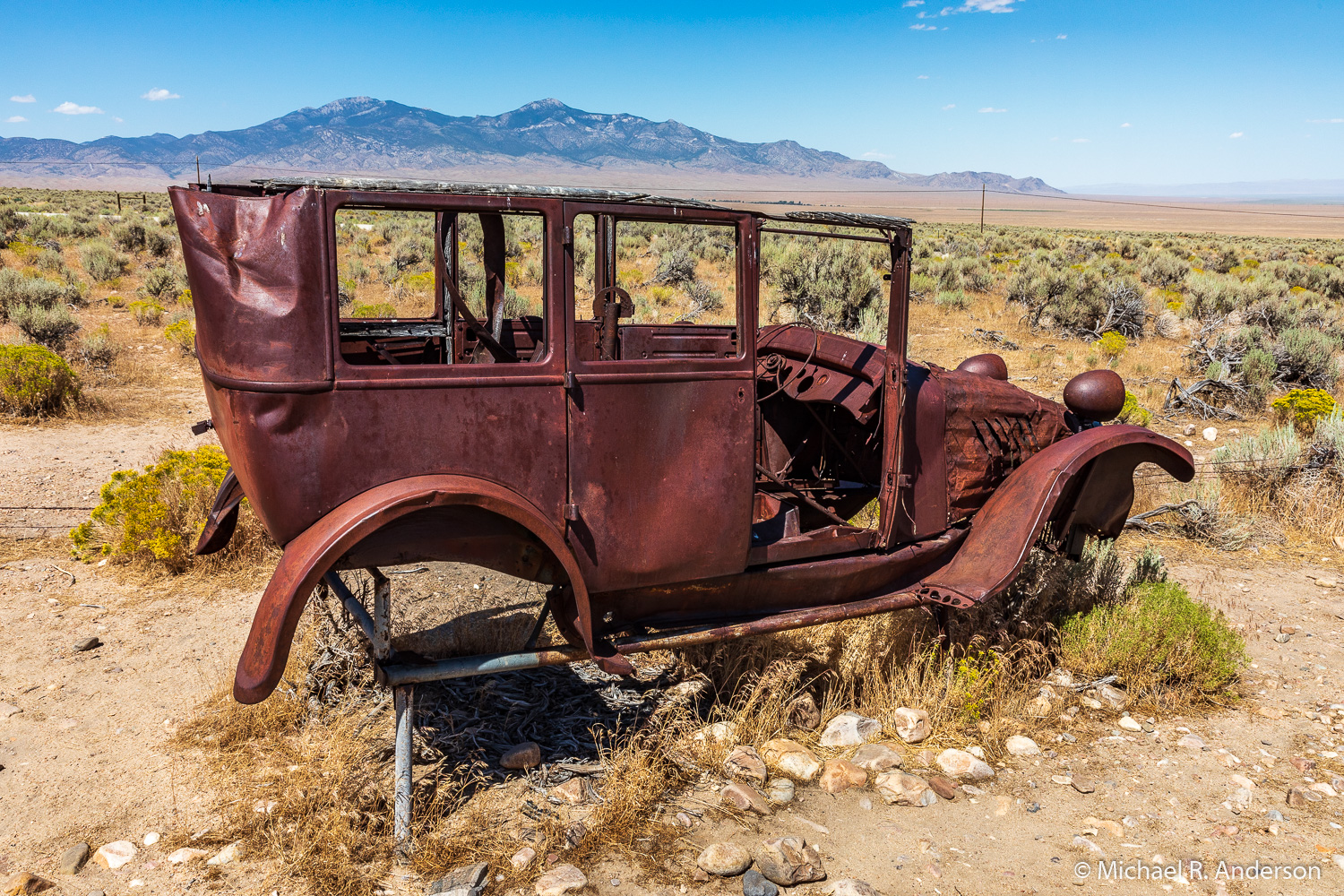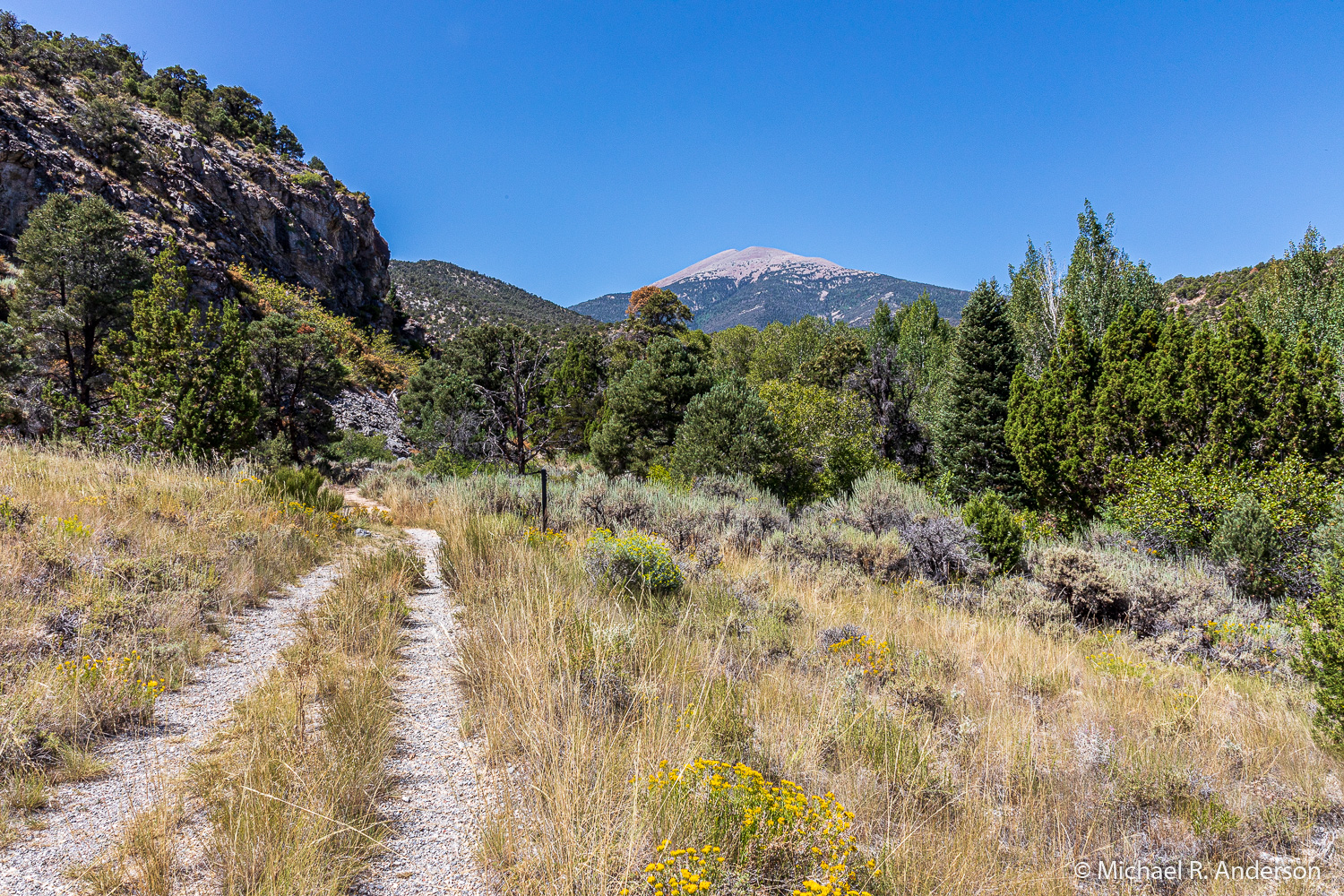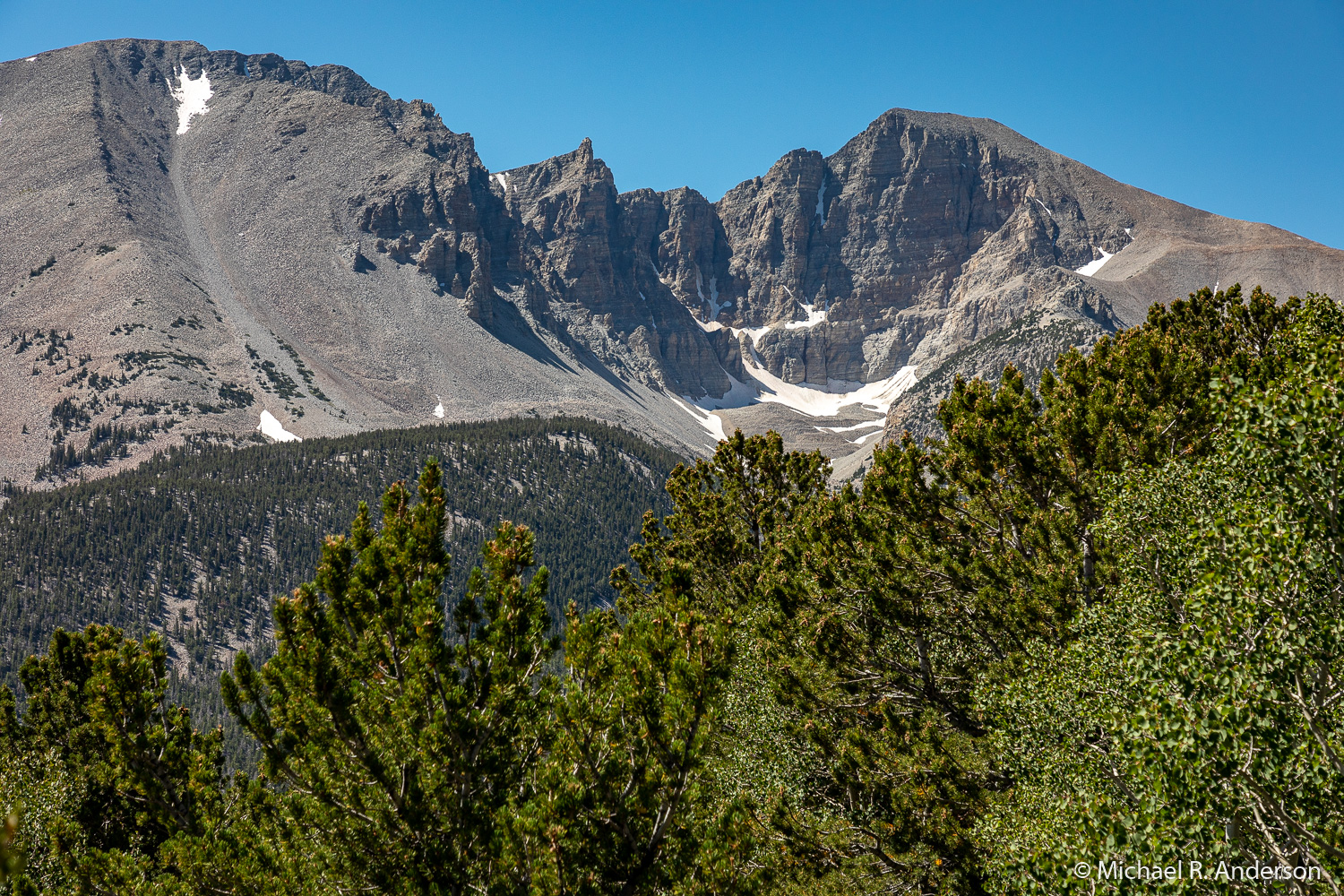When I finally extricated myself from the tangled web of traffic that is Las Vegas, I headed north on US Highway 93. Traffic there was light. I occasionally saw a car through the windshield. I occasionally saw a car in my rear-view mirror. I never saw both at the same time. After four days in Vegas that was fine with me.
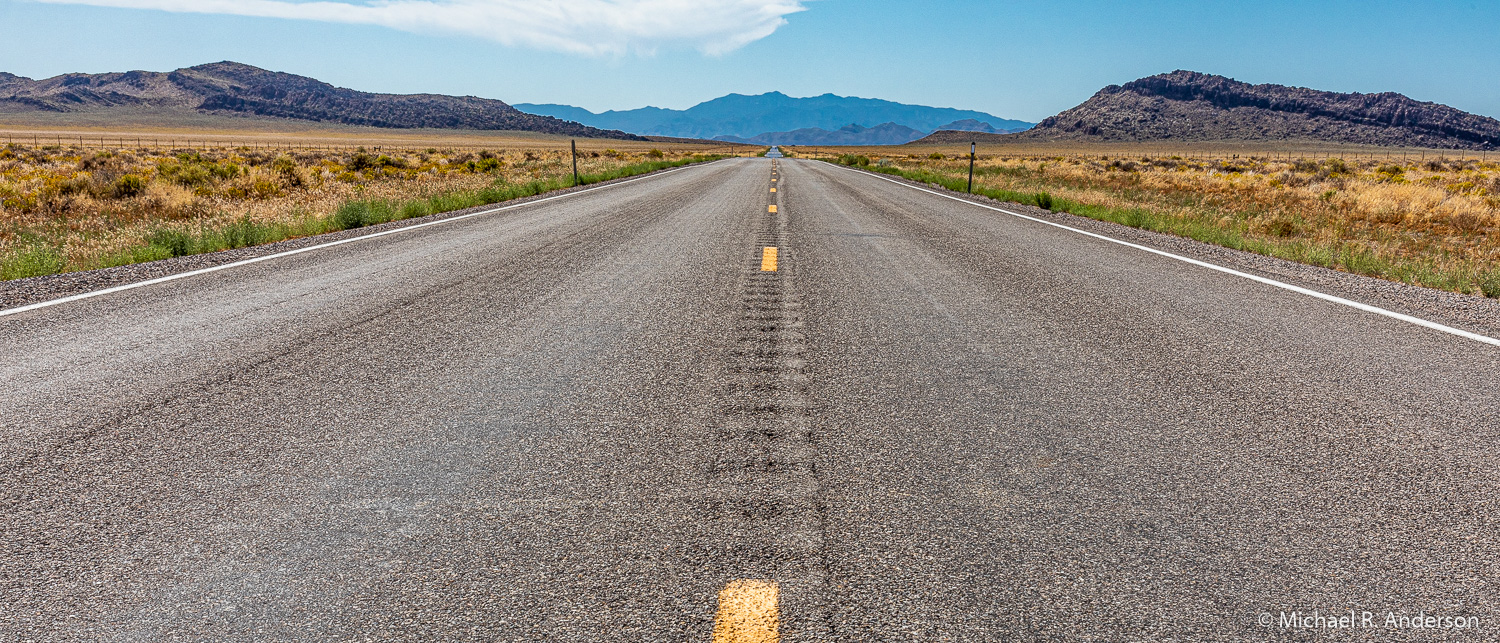
I had been warned that grocery stores would be difficult to locate in this part of Nevada. When I spotted one in the town of Caliente, I grabbed some sandwich stuff and continued on my way. I was running late, so, even though I stopped to grab a photo of the historic mission revival style Caliente Railroad Depot, I didn’t take time for a closer look.

The highway continued through a landscape that seemed timeless. Just before reaching my turnoff at US Highway 50, however, the scene through my window brought me back to reality. A multitude of wind turbines were spread out across the plains in front of the nearby mountain range. This was not a place you would expect to see a wagon train heading west. By the way, the section of US 50 that runs through Nevada is known as “The Loneliest Road in America.” I wasn’t lonely for long, however, because I soon headed south on Nevada State 487.
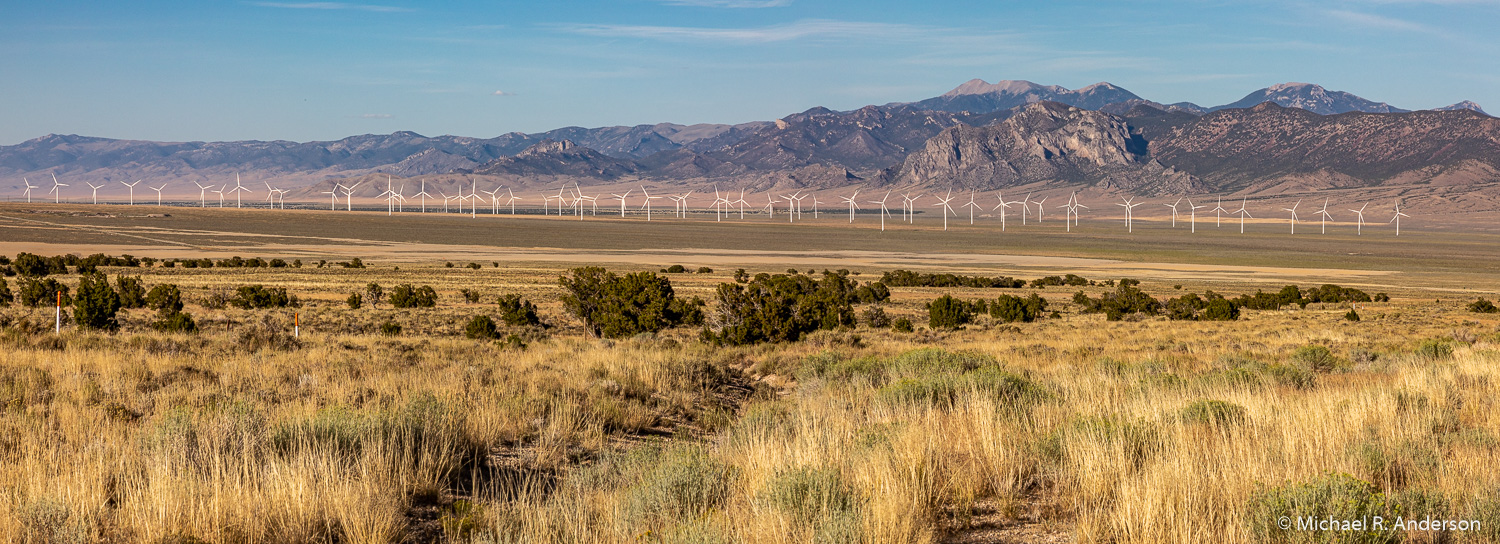
It was late afternoon by the time I reached Baker, Nevada, population 68, elevation 5318. It’s rather embarrassing to get lost in a town as small as Baker, but my GPS led me astray! After a quick call to the owner of the place I rented, I finally found my way to the road that took me to the End of the Trail…er. The owner gave me the keys, showed me around, and, best of all, pointed out the freshly baked loaf of banana bread that she had prepared for me. I snapped a quick picture of the property with my phone, unloaded the car, and finally ate a late dinner of sandwiches and … some banana bread. A very tasty treat!
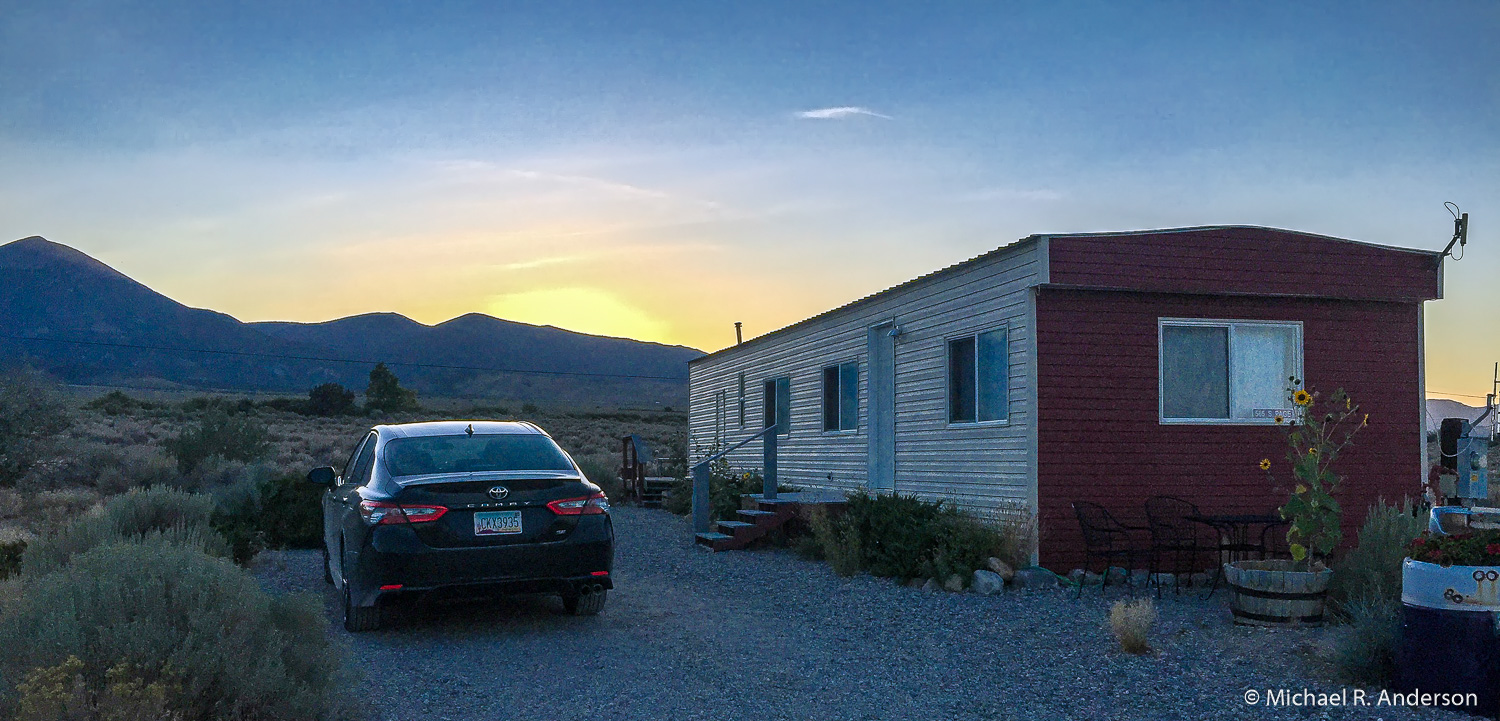
The next morning I drove into town. My rental car and I were both in need of sustenance. The car was quite thirsty from the previous day’s drive so I slaked her thirst first with a stop at the Baker Fuel and RV. No lines, no waiting, but, fortunately, there was gasoline.
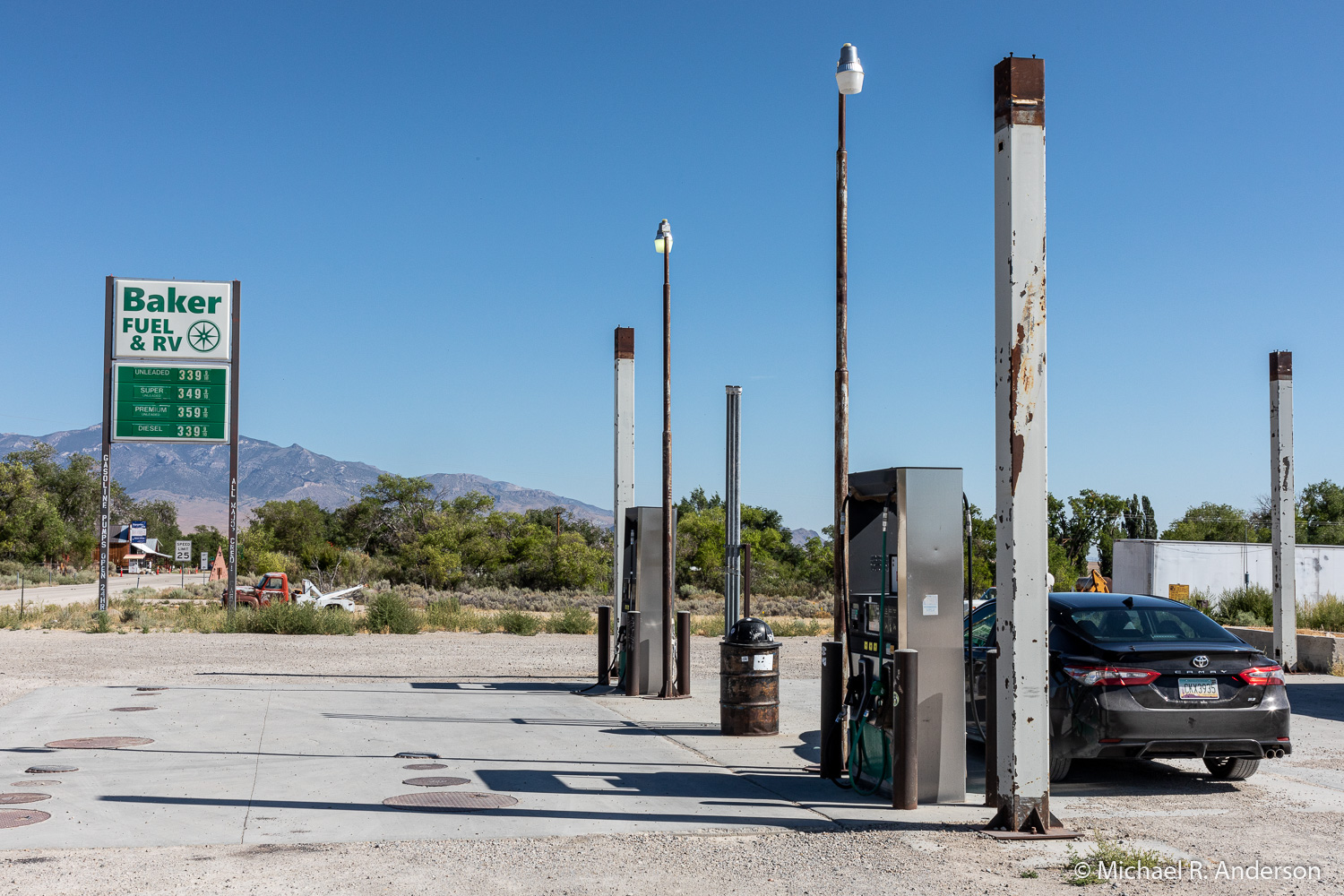
Then I pulled in at Kerouac’s Restaurant & Bar for breakfast. That’s the perfect name for a place to stop when you’re On the Road. If you’re ever in Baker, it’s a great place to eat. The meals all seem to have an extra touch and the specials are a treat. Best of all, the staff was friendly, polite and made me feel right at home. I ended up visiting Kerouac’s every morning for breakfast and every evening for dinner. Lunch? Remember that sandwich stuff I bought in Caliente?
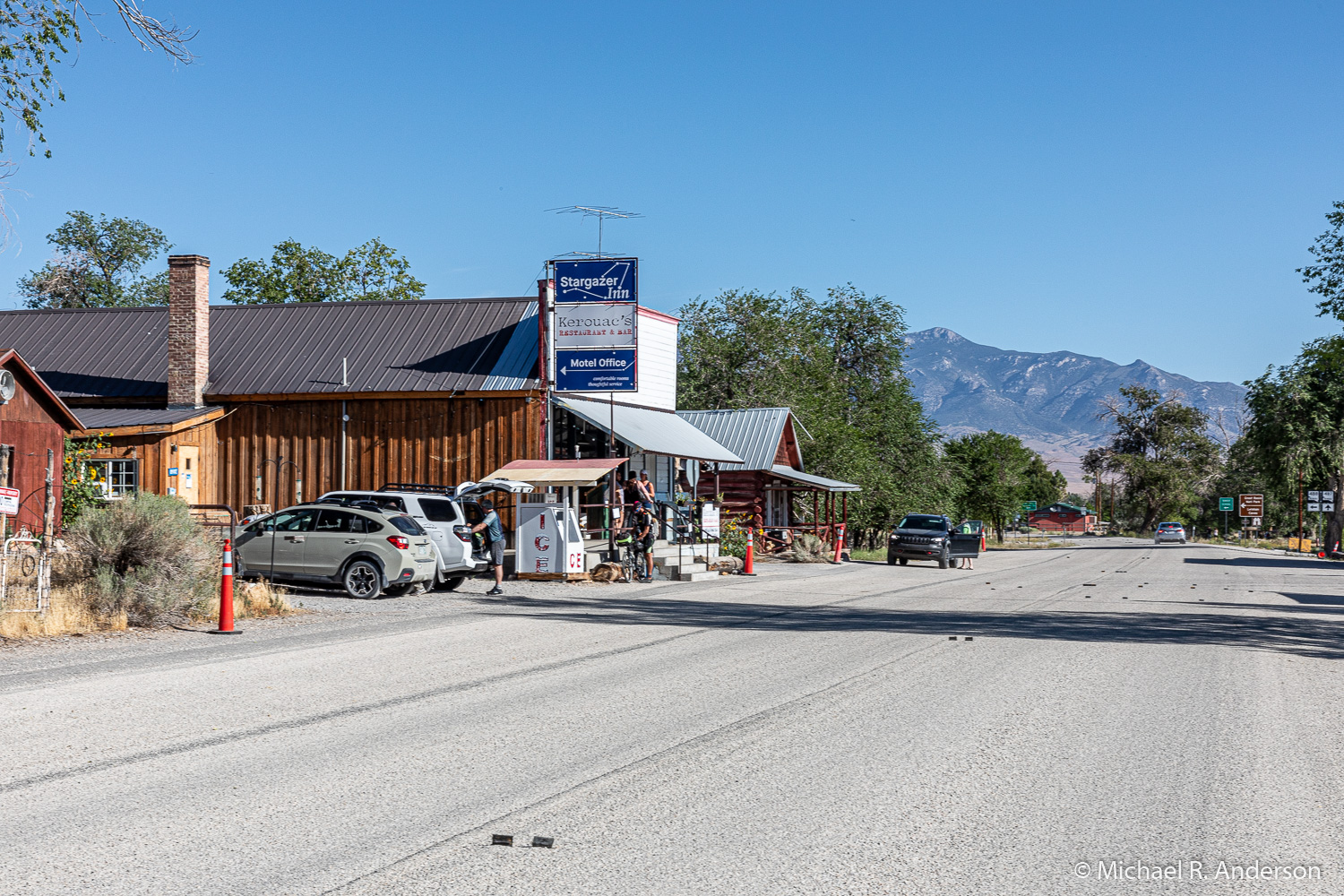
After breakfast I drove up to Great Basin National Park. Along the way I passed a very used car lot and met a slim young couple named Bob and Barb Wire. In the park I took Wheeler Peak Scenic Drive, passing through the sage-covered foothills on the way to the Bristlecone/Alpine Lakes Trailhead where I could get a good view of the 13,063-foot summit of Wheeler Peak. The temperature in Baker was in the mid-90s, so high on the mountain was a perfect place to view the scenery and hike.
On my return drive to Baker I started to think about my plans for the night. One of the reasons I had come here was to experience the dark skies. Great Basin National Park is an officially designated International Dark Sky Park. Having grown up long ago on a small farm, I remember going out into the fields at night to look at the stars and watch for Sputnik to pass overhead through the black skies. Street lights, city lights, security lights and headlights from constant traffic have long since done away with those magic skies. My plans included not only viewing the stars, but also trying to photograph the Milky Way. While it was still daylight I checked out a few possible locations to accomplish this. After another dinner at Kerouac’s, I loaded my camera gear and tripod into the car and drove out to see what I could capture.My first task was to locate where the Milky Way would appear in the sky. For this I used an app on my iPhone called PhotoPills. It can be used to determine many things including the positions of the sun, moon and Milky Way at any time and location. For example, if you wanted to get a photo of the full moon rising in a specific place, such as over a landmark or a building, you could program that location into the app and it will tell you the future days and times that the full moon will be there. I was only concerned about my location, of course, so I just pointed my phone at the still-light sky, turned on augmented reality, and moved around until the Milky Way showed up on screen. I could then move the time ahead to see where it would be in an hour or two when it would be completely dark. I learned two important things on the first night: a setting sun adheres to the watched-pot theory, and when the sun sets in the desert the temperature plummets.
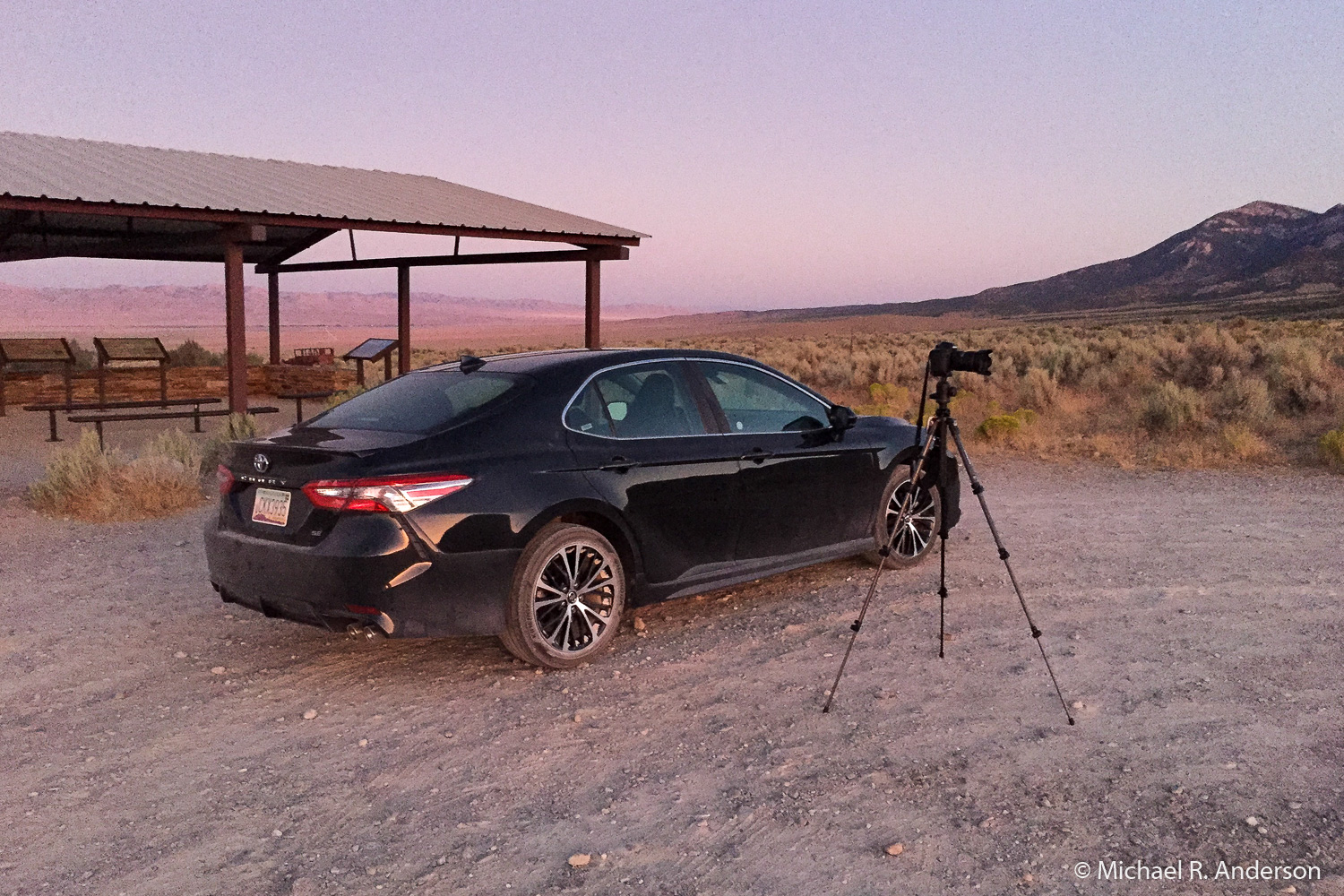
I spent several nights attempting to photograph the Milky Way in three different locations. Rather than giving a night-by-night account, I’ll show some of the results below with a short comment or two.
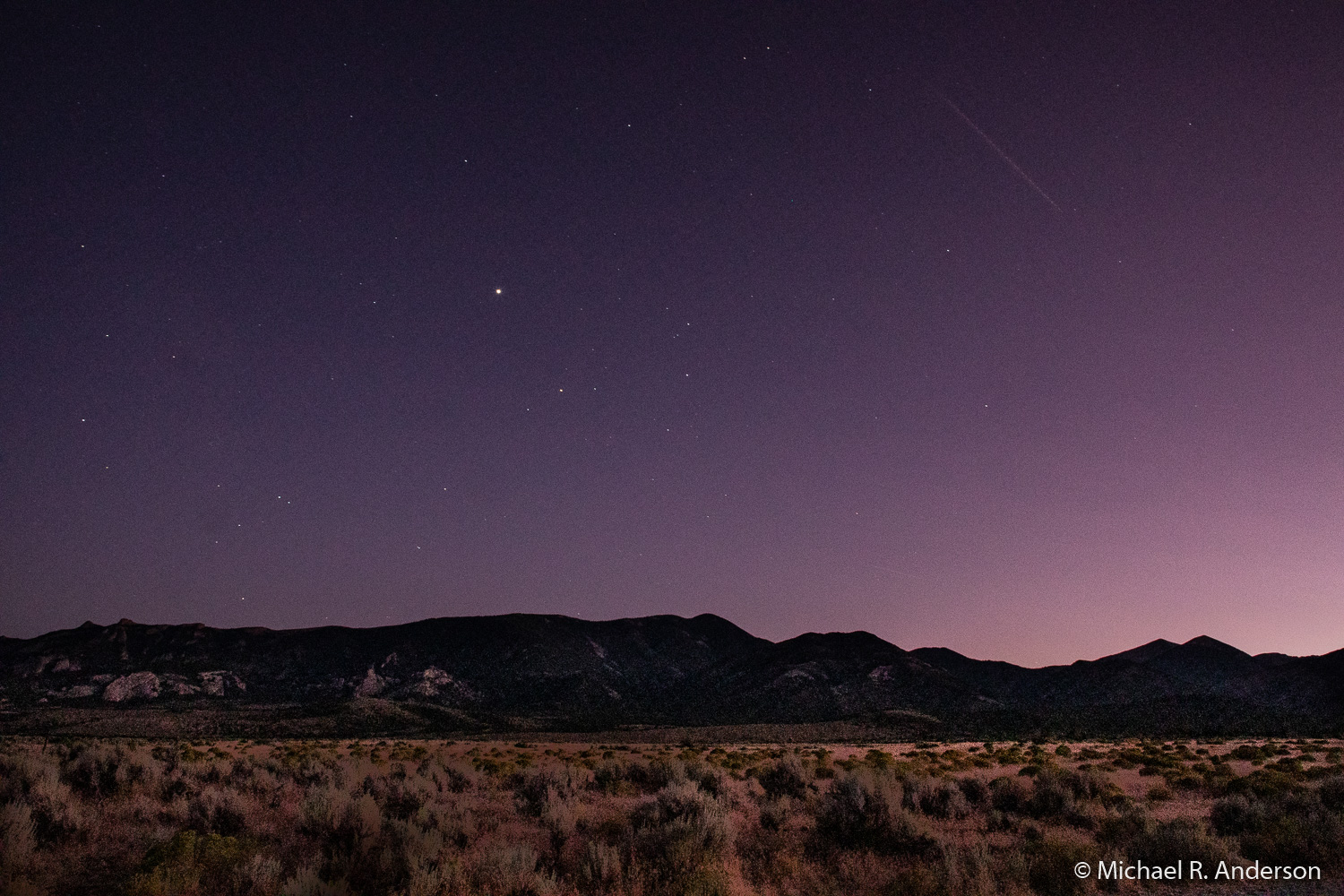
Still waiting for darkness. It turns out that it’s warmer waiting in the car.
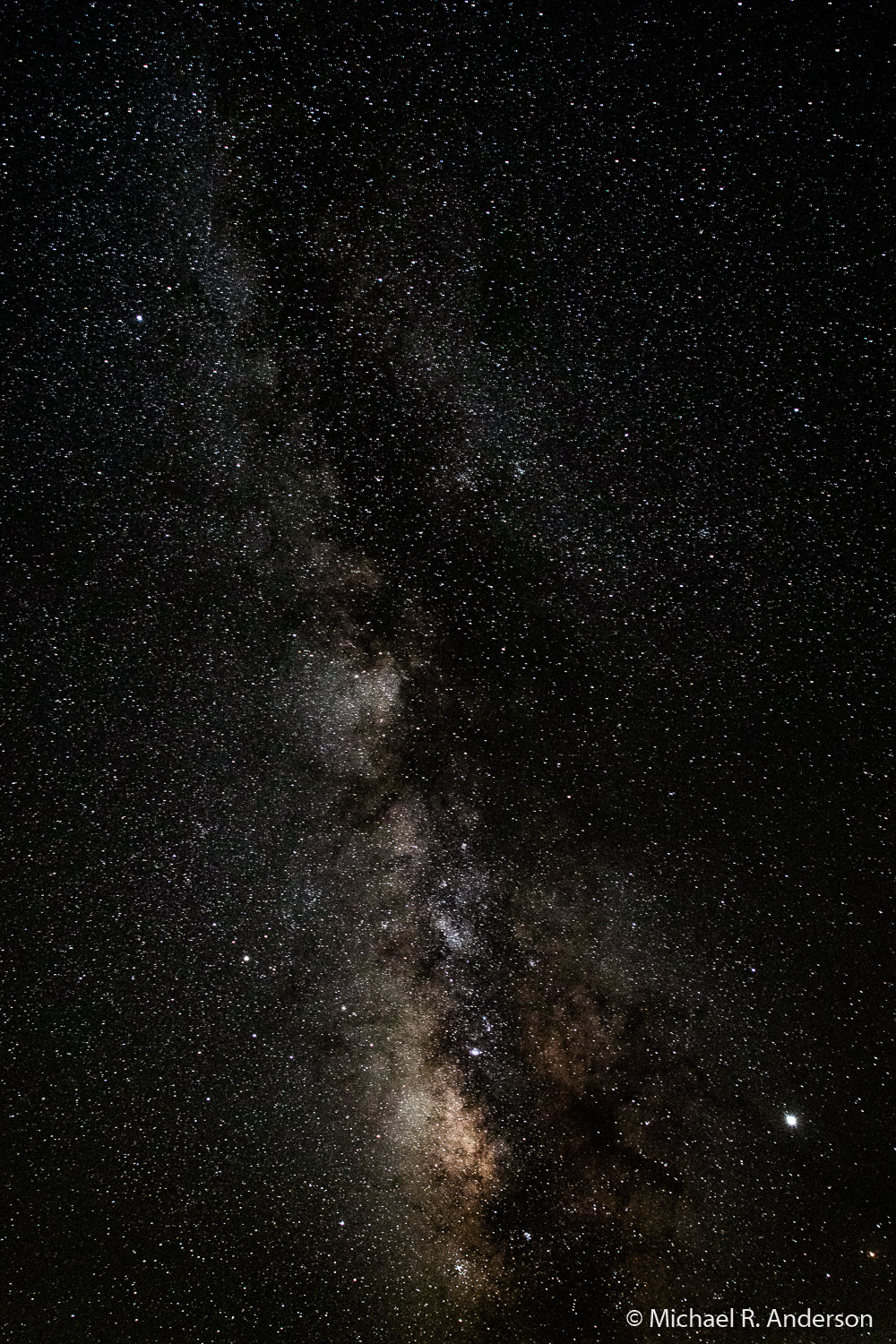
I had trouble at first focusing properly. Going into live-view and enlarging the image on the screen helped. Of course I had to set all of the exposures manually and experiment with different exposures. A faster lens would have helped but f/4 was the best I could do. I ended up using a 20 second exposure with an ISO of either 3200, 6400 (the photo above) or 12800 (the photo below taken on a different night). Since the stars refuse to remain still, exposures longer than 20 seconds start to show streaks from their movement.
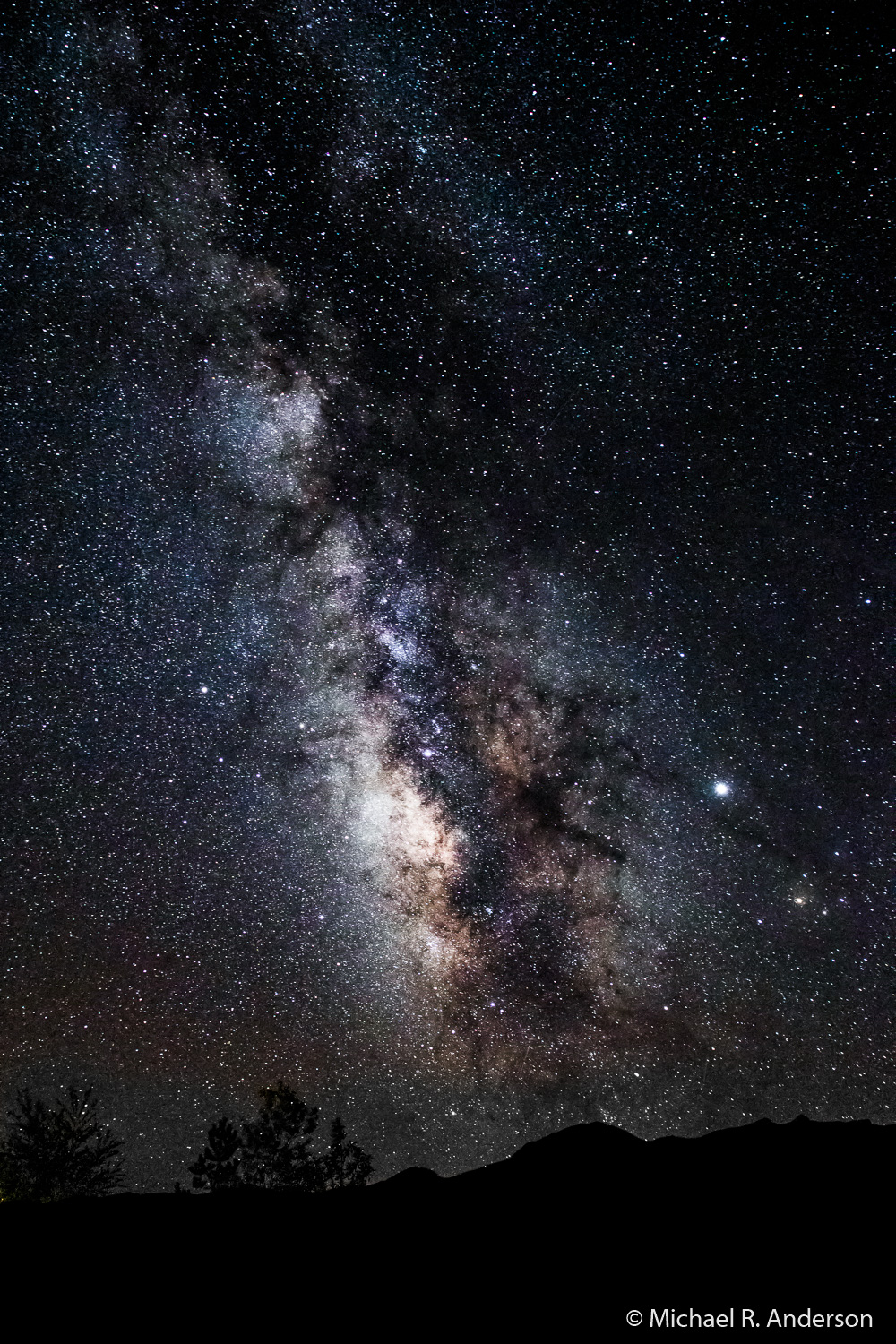
One night I swung the camera around and tried to photograph the Big Dipper. It was almost impossible to see so I decided to help you out by circling the appropriate stars in red. Some lights from downtown Baker show up a bit at the bottom.
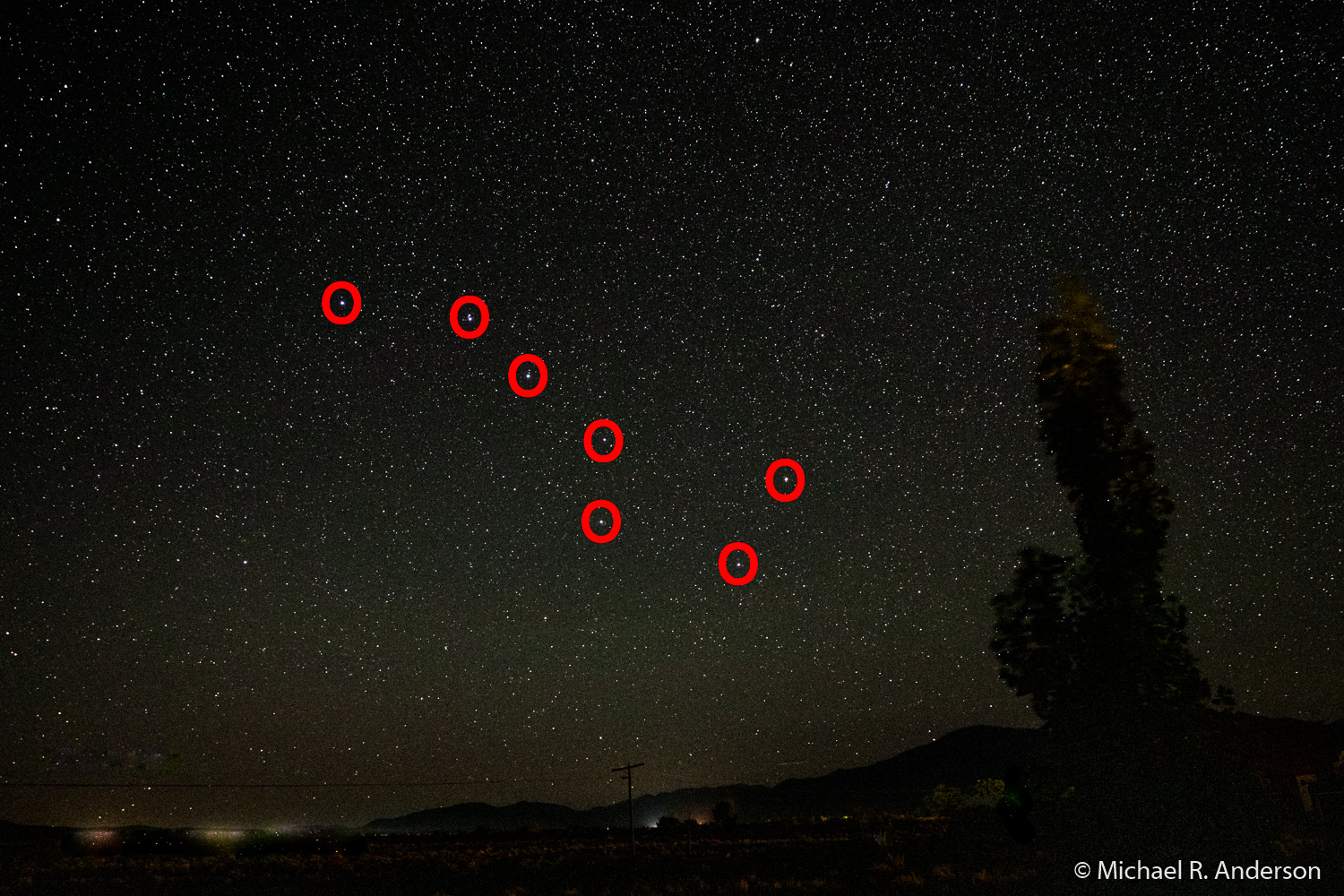
I went further up the mountain one night. Maybe it would be darker there. During one of my first shots a car drove by and did some light painting on the trees in the foreground.
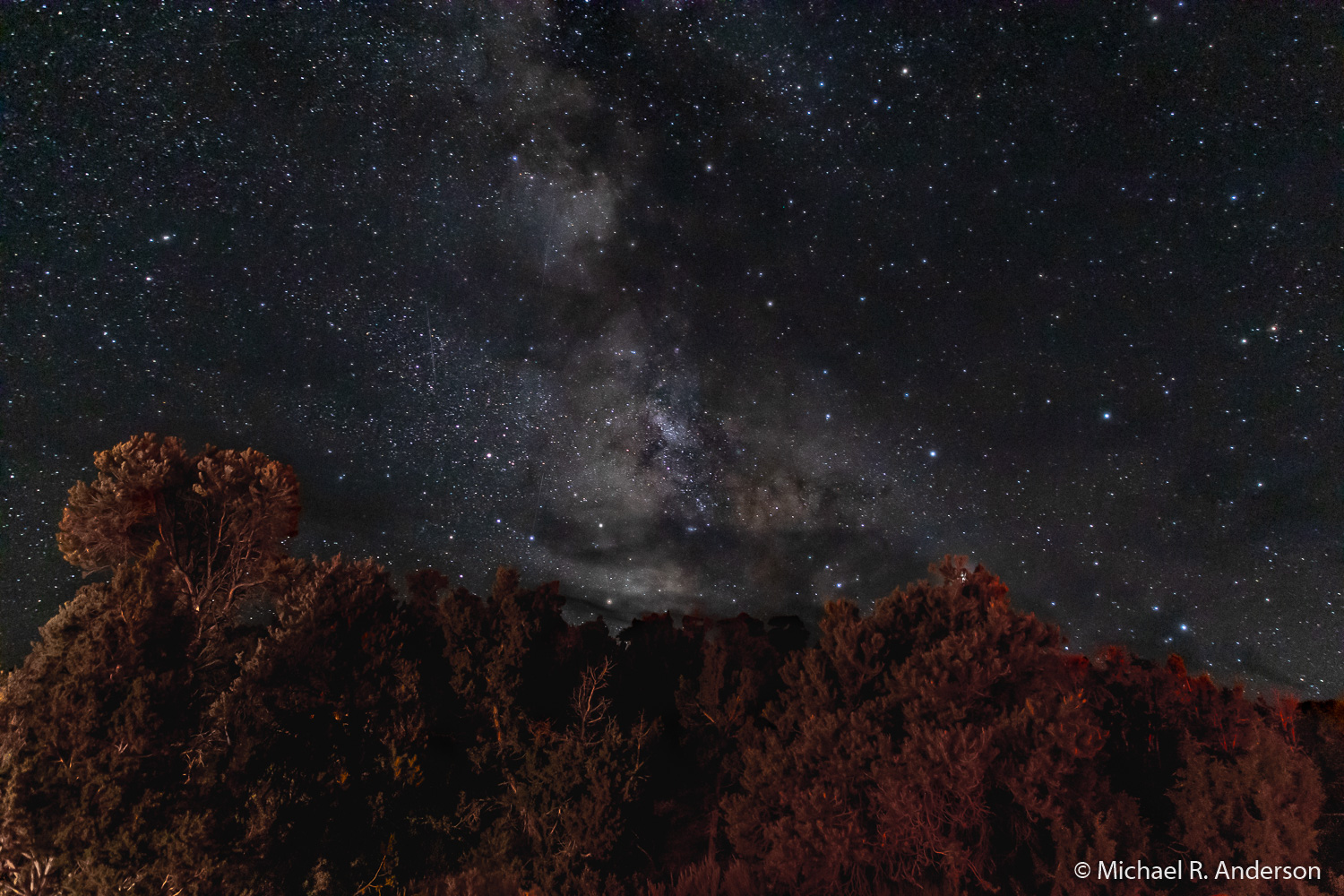
I flipped the camera 90 degrees and tried again. A few clouds in the sky added a bit of color to the image.
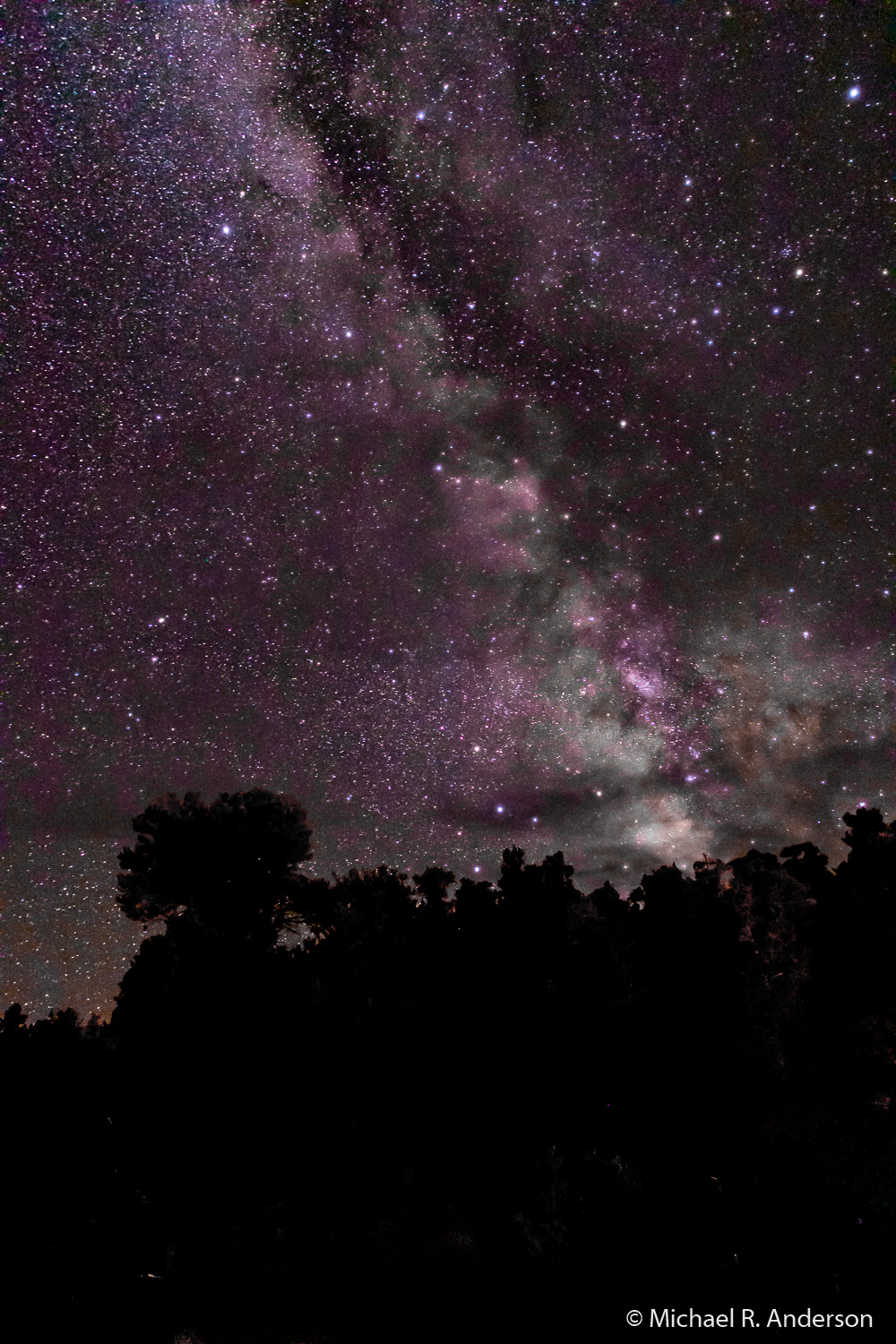
I need to try some other techniques, such as photographing the scene before it’s real dark and then blending that with a later image of the sky so that the foreground shows up a bit. Light painting can also be done intentionally during the exposure so that you don’t have to wait for a random car to go by. It would be nice to have a star tracker to take longer exposures and to get multiple sharp images that could be stacked for a better result. Maybe some day, if this isn’t just a passing fad.
A big breakfast the next morning at Kerouac’s took my mind off of stars for awhile.
